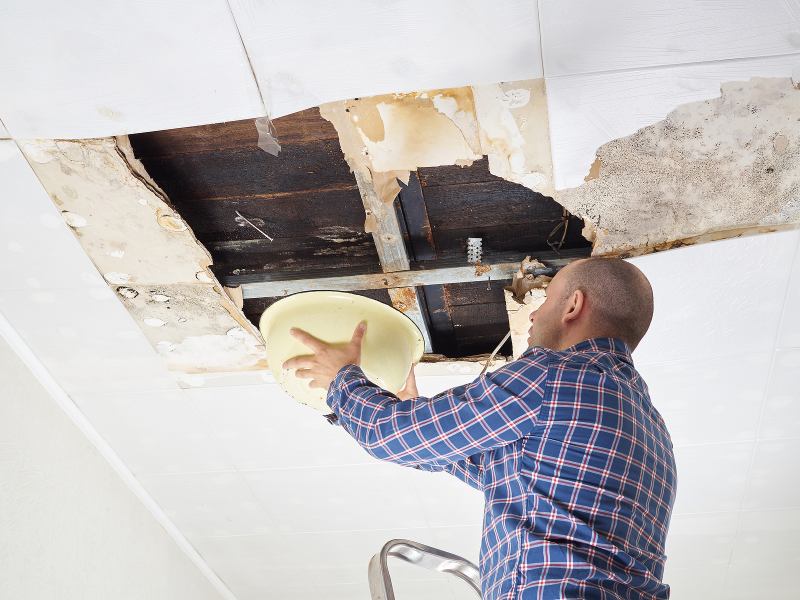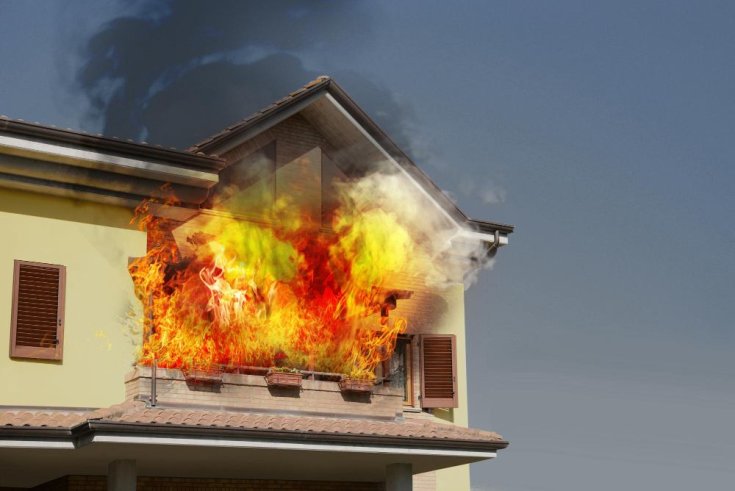404-900-3852
15-45 Minutes Response Time
404-900-3852
15-45 Minutes Response Time
Ceiling water damage can be hard to spot. Sometimes, mold will appear over time, but ceiling damage can cause the room to look dusty with cracks, peeling paint, or wallpaper. Other times, the ceiling might show no signs of damage even though there may be water behind it. Water damage usually happens due to a leaking pipe running through the ceiling, improper insulation, or excess moisture. Tidal Wave Restoration is a top-rated water damage removal company.


How To Prevent Water Damage from Leaking Appliances Water damage from leaking appliances can wreak…
 December 11,2023
December 11,2023

Precautionary Measures to Prevent a Fire on Your Home Home and business fires are awfully…
 December 06,2023
December 06,2023
If there are stains or discoloration on your ceiling, it could mean that there has been water damage. The stain is typically yellow or brown and may be circular in shape. This is caused by mildew or mold growing on your ceiling after wetting it down during a storm or other type of leak in the roof.
Another common sign of ceiling water damage is cracking paint or peeling wallpaper on the walls above your head. If this happens after a storm, it could mean there is leaking from your roof. This can also happen if you have some plumbing issue that led to excessive moisture getting into the structure of your home.
If you notice a strong musty or other odor coming from your ceiling, this may be an indication that there is water damage in your attic. The most common source of this odor is mold and mildew growth behind the drywall. This can happen when moisture gets into the insulation and other materials used to insulate your attic from below.
Another source of this odor can be water damage to your roofing shingles, allowing water to penetrate into the attic flooring below. This can cause mold growth on top of your ceiling material and underneath it (if left untreated).
Several factors can cause ceiling water damage, but the most common cause is a leaky roof. Water penetrating your ceiling and walls can cause extensive damage to your home. If you notice a strong musty or other odor coming from your ceiling, it could also indicate some type of water damage in your attic.
This is one of the most common causes of ceiling water damage because it often goes undetected for months or longer before being discovered. If water leaks from a pipe into your attic space, it will eventually find its way down into the drywall behind it and eventually down onto the ceiling below. The best way to fix this kind of problem is to hire professional plumbers who can locate where exactly the leak originates and stop it at its source.
Excess moisture from rain or leaky plumbing will eventually cause mold and mildew on your ceiling. The longer this moisture remains in place, the more damage it will cause to your ceiling and other surfaces in your home.
When you see signs of ceiling water damage or notice that your ceiling has started to leak, you must address the problem immediately before it becomes more expensive. It is also important that you call an expert to determine where the problem originates so they can ensure that they fix all areas of concern with their service.
The sooner you call for ceiling water damage restoration, the easier it'll be to get the job done. The longer you wait, the more expensive and time-consuming repairs can be, not to mention potentially harmful to anyone exposed to the water and its residue. If you have any questions, don't hesitate to contact Tidal Wave Restoration for expert advice about properly handling your leaky ceiling.